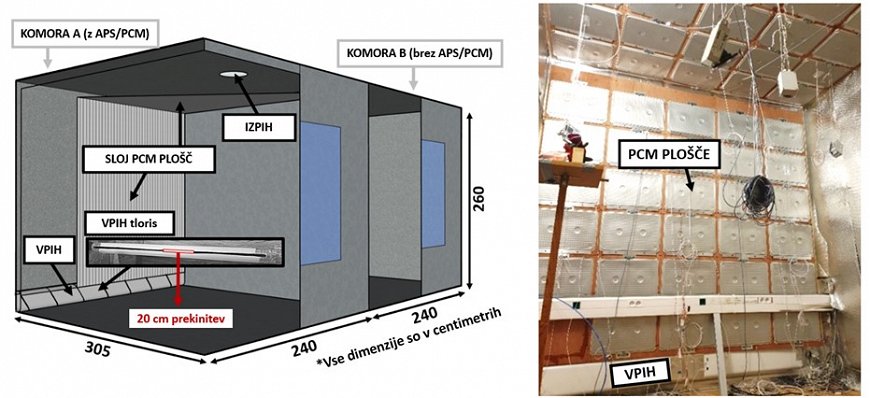Due to the consequences of global warming, cooling of lightweight buildings is one of the main future challenges. The study presents an active-passive system (APS) with phase change material (PCM) plates integrated into the internal wall and ceiling substructure which during the day cools the indoor space passively. The authors of the research, the Laboratory for Heating, Sanitary and Solar Technology, jointly published the results in the journal Sustainable Cities and Society (IF=10,696).
During the night, the air gap is ventilated actively to improve the PCM solidification process. The APS was experimentally tested in two identical test cells, PCM modified (cell-A) and reference cell (cell-B). Two different types of scenarios were investigated. First type tested the cooling effect of the PCM during the daytime cycle, determined by the temperature difference between the cell-B and cell-A. The same amount of heat was simultaneously added to both cells which was navigated by the setpoint air temperature in the cell-B (26 °C, 30 °C, 30 °C with background ventilation, 35 °C, TRY Ljubljana, TRY Rome and heatwave Ljubljana). Second type tested the PCM solidification time during the nighttime cycle (inlet air temperature (Tai) of 15 °C, 16 °C, and 17 °C). The results showed that PCM plates provided the largest cooling effect at in 35°C-scenario. The complete solidification of PCM was achieved at Tai of 16°C. The system is adequate for Mediterranean summer conditions.

Figure: Experimental facility (left) and PCM modified cell – wall and ceiling (right)
Article available at: https://doi.org/10.1016/j.scs.2022.104031